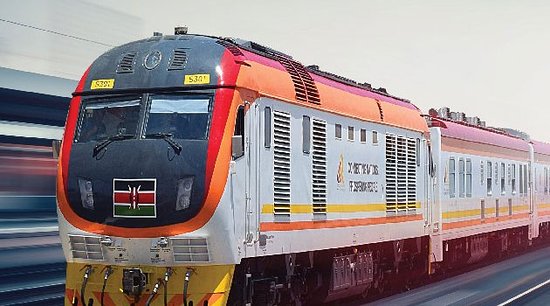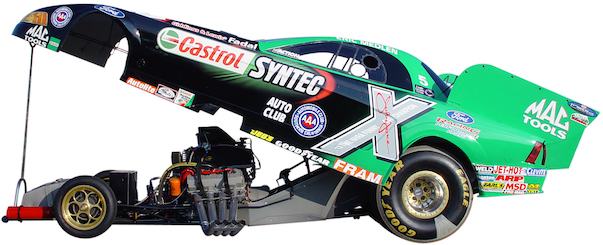Future Of Standard Gauge Railways Kenya
Standard gauge railways in Kenya represent a significant milestone in the nation’s transportation infrastructure. Launched in 2017, the SGR has drastically changed how goods and passengers are transported across the country, particularly between Nairobi and Mombasa. As Kenya continues to develop and modernize its infrastructure, understanding the future of the Standard Gauge Railways is crucial for both economic growth and regional integration. This article delves into the anticipated advancements, expansions, and impacts of the SGR on Kenya’s economy, society, and environment.
Current status of the standard gauge railways Kenya
The Standard Gauge Railways Kenya project is part of Kenya’s Vision 2030 initiative, which aims to enhance the country’s competitiveness as a regional hub. Currently, the SGR connects Mombasa and Nairobi, with a branch line extending to Naivasha. This modern railway has not only reduced travel times but has also provided a reliable alternative to road transport, significantly easing traffic congestion along the busy Mombasa-Nairobi highway.
Since its inception, the SGR has facilitated millions of passengers and tons of freight, showcasing its effectiveness in boosting the economy and promoting trade. However, the project is not without challenges, including financial sustainability and competition from road transport. As we look ahead, the future of the SGR in Kenya will be shaped by several key factors.
Expansion plans for standard gauge railways
1) Extending the rail network
The most significant aspect of the future of standard gauge railways in Kenya is the planned expansion of the rail network. The government has outlined proposals to extend the SGR to various regions, including Kisumu, Eldoret, and beyond. These expansions aim to connect more cities and facilitate easier access to markets, thereby promoting economic growth across the country.
Connecting Kisumu to the SGR will allow for the seamless transport of goods to and from the western part of the country. This connection is particularly vital for agricultural exports, which constitute a significant portion of Kenya’s economy. By improving access to international markets, the SGR can play a critical role in elevating the country’s economic profile.
2) Integrating with regional rail networks
In addition to expanding the domestic network, there are plans for the standard gauge railways to connect with regional rail networks in East Africa. Initiatives such as the East African Railways integration aim to link Kenya’s SGR with Tanzania, Uganda, and South Sudan rail systems. This regional integration will facilitate cross-border trade, enhancing economic collaboration among East African countries.
The integration of rail networks can lead to increased efficiency in transport logistics, reducing costs and transit times for goods moving across borders. As the region grows economically, a robust railway network will be crucial for supporting trade agreements and facilitating smoother transport of products.
Technological innovations and sustainability
1) Smart rail technology
The future of the Standard Gauge Railways in Kenya also hinges on the adoption of advanced technologies. Implementing smart rail technologies can enhance the efficiency and safety of operations. This includes real-time monitoring systems for trains, predictive maintenance technologies, and enhanced communication systems to manage train schedules effectively.
Smart rail technology can also improve the passenger experience. With features such as mobile ticketing, real-time train tracking, and onboard Wi-Fi, passengers can enjoy a more seamless and connected journey. These innovations will help attract more users to the SGR, thereby increasing its economic viability.
2) Sustainability initiatives
Sustainability is becoming increasingly vital in transportation planning. The SGR has the potential to significantly reduce carbon emissions compared to road transport. As Kenya focuses on climate change mitigation, further investment in green technologies will be essential.
Future developments may include energy-efficient trains, solar-powered stations, and initiatives to promote eco-friendly practices among passengers and freight operators. These sustainability initiatives will not only enhance the environmental credentials of the SGR but also align with global efforts to combat climate change.
Economic impact and job creation
1) Boosting trade and industry
The expansion and improvement of the standard gauge railways in Kenya will likely have profound effects on trade and industry. By improving connectivity between major urban centers and rural areas, the SGR can facilitate the movement of goods, making it easier for businesses to access markets. This enhanced accessibility can lead to increased production and distribution efficiency, benefitting various sectors, including agriculture, manufacturing, and tourism.
Furthermore, by providing a reliable mode of transport, businesses can reduce logistics costs, which is often a significant expenditure. This cost-effectiveness can empower small and medium enterprises (SMEs) to compete more effectively in the market.
2) Job creation
The future of the SGR will also be characterized by job creation. Expanding the railway network and integrating advanced technologies will require a skilled workforce. Opportunities in construction, operations, maintenance, and customer service will emerge, contributing to job growth in the country.
In addition, the SGR can stimulate indirect job creation in related sectors, such as tourism and hospitality. As connectivity improves, regions that are currently less accessible will attract more visitors, leading to increased economic activity and job opportunities in those areas.
Enhancing passenger experience
1) Improved services and amenities
As the standard gauge railways evolve, enhancing the passenger experience will be a top priority. Future plans may include upgrading existing facilities and services, such as better waiting areas, improved onboard amenities, and more frequent train services.
Creating a more comfortable and enjoyable travel experience will be crucial for attracting a larger passenger base. Additionally, providing value-added services like food options, entertainment, and accessibility for persons with disabilities will cater to a diverse range of travellers.
2) Focus on safety and security
Safety and security are paramount in public transport. As the SGR expands, ensuring the safety of passengers will be critical. Investments in surveillance systems, better emergency response protocols, and staff training will enhance security measures on the trains and at the stations.
With the rise of travel-related concerns globally, emphasizing safety can build passenger trust and encourage more people to utilize the SGR. This trust is essential for the long-term sustainability of the railway as a preferred mode of transport.
Challenges ahead
While the future of the Standard Gauge Railways in Kenya looks promising, it is not without challenges. Financial sustainability remains a key concern, as the railway has faced operational losses since its inception. To address this issue, the government and stakeholders must explore innovative funding models, including public-private partnerships, to ensure the long-term viability of the railway.
Additionally, competition from road transport, particularly in the freight sector, poses a challenge. The government will need to promote the advantages of rail transport over road transport, such as cost-effectiveness and environmental benefits, to encourage more businesses to switch to rail for their logistics needs.
Moving ahead
The future of Standard Gauge Railways in Kenya is set to shape the nation’s transportation landscape significantly. With planned expansions, technological innovations, and a focus on sustainability, the SGR has the potential to bolster economic growth, enhance regional integration, and improve the overall travel experience for passengers.
As Kenya moves forward, the Standard Gauge Railways will not only serve as a vital transportation link but also as a catalyst for economic development and job creation. By addressing the challenges and capitalising on opportunities, SGR can become a model for successful rail transport systems. Embracing this transformative potential will be key to unlocking the full benefits of SGR.





